#App interface design
Explore tagged Tumblr posts
Text
How App Interface Design Is Evolving with AI and User-Centric UX Trends

App Interface Design's Evolution: AI and User-Centric UX Trends Consider this: The average smartphone user touches their device over 2,600 times a day. For heavy users, that figure soars past 5,400. Each tap, swipe, and pinch interacts directly with an interface designed to guide them. But are those interfaces truly serving users in 2025, amidst accelerating technological user-centric UX trends and the pervasive influence of AI in design? The traditional ways we conceived of and built interfaces are rapidly transforming, driven by sophisticated algorithms and a renewed, imperative focus on authentic user-centric design.
The AI Paradigm Shift in Interface Creation
Artificial intelligence isn't merely a tool add-on; it signifies a profound paradigm shift in how we approach the very foundations of app interface design. Overtly, AI automates routine tasks. Subtly, it augments creativity, analyzes colossal datasets with unprecedented alacrity, and stands poised to recalibrate the designer's role entirely. This isn't science fiction anymore; it's the operating reality for forward-thinking design teams.
AI Assisting Design Workflows
Integrating AI assistance into workflows offers tangible improvements in efficiency and opens avenues for novel design possibilities.
Automation of Repetitive Tasks: Tedious activities such as image slicing, code generation for basic components, or initial layout variations can be handled by AI. This frees designers to concentrate on more complex problem-solving, creative conceptualization, and strategic thinking. Think of AI not as replacement, but as a highly efficient junior assistant handling the groundwork.
Generating Design Variations: Based on established brand guidelines, user data, or even initial wireframes, AI algorithms can generate a myriad of design options in moments. This velocity allows for rapid iteration and comparative analysis, potentially unveiling design directions a human might not have considered within the same timeframe.
Predictive Analytics for User Behavior: AI's capacity to sift through vast quantities of usage data identifies patterns and predicts user actions with increasing accuracy. This predictive power directly informs design decisions, allowing interfaces to pre-empt user needs or present information most relevant to an individual's predicted journey within the application.
Ethical Considerations and Bias Mitigation
As AI becomes more entrenched in the design process, acknowledging and actively mitigating inherent biases is absolutely paramount. AI models are trained on data, and if that data reflects societal biases (racial, gender, ability, etc.), the AI will perpetuate them in its design outputs.
Vigilance is required to audit the data sources used for AI training.
Testing AI-generated designs across diverse user demographics is crucial to identify and rectify unfair or exclusionary outcomes.
Maintaining human oversight in crucial decision points of the design process safeguards against automated discrimination or ethically questionable design patterns. Designers become stewards, ensuring the AI serves human well-being and inclusivity.
The Core of User-Centricity in 2025
While technology sprints ahead, the raison d'être of design remains constant: serving the user. User-centric UX trends are less about adopting flashy tech and more about a deeply empathetic approach that prioritizes genuine human needs, contexts, and emotions. In 2025, "user-centric" holds a more nuanced, sophisticated meaning than ever before.
Understanding Evolving User Needs
User expectations aren't static; they morph with technological fluency and societal shifts. A truly user-centric design understands this fluidity.
Hyper-Personalization: Beyond simply using a user's name, personalization now demands interfaces that adapt content, features, and even visual style based on real-time context, historical usage, preferences, and predicted needs. This requires a granular understanding of individual users, facilitated by AI analysis.
Accessibility as a Universal Standard: Designing for accessibility is no longer an afterthought or an optional feature; it is a fundamental requirement. This encompasses not only compliance with guidelines (like WCAG) but designing intuitively for users with diverse cognitive, visual, auditory, and motor abilities from the outset. Inaccessible design effectively excludes large potential user bases.
Emotional Design (Kansei UX): Moving beyond usability, designers now consider the emotional resonance of an interface. Does it feel joyful, trustworthy, calming, exciting? Kansei engineering, originating in Japan, studies how users feel about products. Applying these principles to app interface design fosters deeper user engagement and loyalty by consciously eliciting positive emotional responses.
Measuring and Iterating on User Experience
Good design isn't guesswork; it's an iterative process informed by data and direct user feedback. Measuring the efficacy of designs is foundational to refinement.
Employing robust analytics to track user flows, completion rates, points of friction, and feature engagement.
Conducting diverse forms of user research: usability testing, interviews, surveys, and contextual inquiries.
Utilizing A/B testing and multivariate testing to compare design variations head-to-head based on quantifiable user behavior metrics.
Establishing continuous feedback loops, allowing designers to remain responsive to evolving user sentiments and needs over the product lifecycle.
Synergizing AI and User-Centric Approaches
The true power emerges not from choosing between AI-driven or user-centric design, but by strategically intertwining them. AI, when wielded through a user-centric lens, can elevate interfaces to new heights of relevance, adaptability, and intuitiveness. Conversely, user-centric design principles provide the ethical and humanistic framework that prevents AI from creating sterile, unhelpful, or biased interfaces. This confluence marks the frontier of advanced app interface design.
Designing Adaptive Interfaces
Adaptive interfaces change dynamically based on individual users, their context, and even their momentary state. AI is the engine that makes this feasible on a large scale.
Real-time Customization via AI: Imagine an interface that changes button size for a user walking in bright sunlight, or adjusts complexity for a novice versus an expert user within the same application. AI processes data streams (device sensors, usage history, explicit preferences) to make these interface adjustments happen in the moment.
Contextual Awareness: An interface that knows you're driving might simplify controls; one that knows you're in a quiet library might suggest different features. AI enables applications to understand and react to the user's current environmental and situational context, presenting information and interactions most appropriate to that specific scenario.
Leveraging AI for Deeper User Insights
AI's analytical capabilities allow us to move beyond simple clickstream data to glean profound insights into user motivations, difficulties, and implicit desires.
Beyond Basic Analytics: Instead of just seeing where users click, AI can help understand why they might be hesitating at a certain point, what task they are likely attempting based on partial actions, or how their usage patterns compare to others with similar profiles.
Identifying Implicit Needs: Users often struggle to articulate exactly what they need or want. AI can analyze vast datasets – including user support interactions, social media sentiment, and aggregate usage patterns – to uncover latent needs or points of frustration that users themselves haven't explicitly mentioned.
Building Trust in AI-Powered UX
As AI's role becomes more overt (e.g., a chatbot, a recommendation engine, an interface that visibly rearranges itself), building and maintaining user trust becomes critical.
Transparency in AI Decisions: Users appreciate knowing why something is being recommended, why the interface changed, or why certain options are presented. Explaining the basis of an AI-driven interaction fosters confidence. Avoid 'black box' scenarios where the AI's actions seem arbitrary.
Maintaining Human Oversight: For critical decisions or sensitive interactions, the system should allow for human intervention or fallback options. Users need assurance that they aren't solely at the mercy of an algorithm and can access human support if needed. This hybrid approach leverages AI's strengths while providing a safety net and building trust.
Practical Guide: Navigating the Evolution
Making this transition isn't automatic. It requires a deliberate approach to strategy, a willingness to adapt, and a proactive stance against common pitfalls. Think of this section as laying out actionable considerations for design teams in 2025.
Strategies for Adoption
Successfully integrating AI in design and doubling down on user-centric design demands a multifaceted strategy.
Education and Upskilling: Design teams require new literacies. Understanding basic AI concepts, data interpretation, ethical AI principles, and advanced research methodologies are no longer niche skills; they are becoming foundational. Organizations must invest in continuous learning.
Iterative AI Integration: Do not attempt a monolithic overhaul. Begin by integrating AI into specific, well-defined areas of the design workflow or user experience where its value is clearest (e.g., content personalization, component generation, preliminary usability analysis). Learn from these early efforts and expand incrementally.
Collaboration (Designers, Data Scientists, Users): The future of design is profoundly collaborative. Designers must work hand-in-hand with data scientists to understand the potential and limitations of AI. Critically, users must be involved throughout the process – not just as passive subjects of analysis, but as active participants providing feedback on AI-driven features and adaptive interfaces.
Common Pitfalls to Avoid
The path is fraught with potential missteps. Awareness prevents stumbling.
Over-Reliance on AI: Allowing AI to dictate design without human critique risks generic, soulless interfaces that lack true creativity or empathetic understanding. AI should augment, not supplant, human design intelligence.
Neglecting Human Testing: Believing AI analysis replaces direct human user research is a grave error. AI reveals patterns; qualitative user testing reveals why those patterns exist, uncovers nuances, and captures emotional responses AI cannot.
Ignoring Ethical Implications: Deploying AI-powered interfaces without rigorous ethical vetting can lead to biased experiences, erosion of user trust, and potential reputational damage. Prioritize fairness, transparency, and user control from concept to deployment.
Expert Perspectives and Future Trajectories
Looking ahead, the evolution promises interfaces that are profoundly intuitive, adapting not just to explicit commands but implicit desires and cognitive states. A prominent design leader remarked, "We are moving from interfaces a user learns to navigate, to interfaces that learn the user. The system adapts to you, not the other way around." Another researcher commented, "Ethical frameworks are no longer peripheral; they are the bedrock upon which we build AI-augmented experiences. Without trust and fairness, sophisticated interfaces will simply fail." Emerging areas like Neuro-adaptive UX, which seeks to interpret cognitive signals to tailor interfaces in real-time, or the integration of AR/VR elements facilitated by AI's spatial understanding, signal even more profound shifts on the horizon. The focus will intensify on creating interfaces that feel less like tools and more like seamless extensions of human thought and intent. My personal perspective is that while the technical possibilities are nearly boundless, the most impactful interfaces will be those that remain grounded in empathy, equity, and genuine value creation for the end-user, resisting the temptation of technology for technology's sake.
Key Takeaways
App interface design is fundamentally changing due to AI and refined user-centric UX trends.
AI automates design tasks, generates options, and predicts user behavior, requiring new ethical vigilance.
User-centric design in 2025 mandates deep personalization, universal accessibility, and attention to emotional response.
The synergy of AI and user-centric design enables adaptive, contextually aware interfaces and deeper user insights.
Success requires educating teams, integrating AI iteratively, fostering collaboration, and diligently avoiding pitfalls like neglecting human testing.
The future points toward even more intuitive, perhaps even cognitively aware, interfaces, demanding a persistent focus on ethical, human-first design principles.
Frequently Asked Questions
How is artificial intelligence changing the design role?
AI Automates Mundane Tasks in Design The role pivots from execution toward strategic oversight, prompt crafting, and ensuring ethical outcomes.
What defines contemporary user focus in design today?
Emphasis Placed on Personalized Experiences and Access Design prioritizes individual needs, real-time context, comprehensive accessibility, and emotional impact.
What specific ways does AI benefit user analysis?
AI Provides Deeper Analytical Viewpoints Beyond clicks, it aids in understanding why actions occur, predicting needs, and revealing unspoken frustrations.
Are there major risks integrating artificial intelligence in user interface?
Key Concerns Include Bias and Reliance Excess Risks involve perpetuating data biases, neglecting human insight, and creating interfaces lacking emotional depth.
How should teams prepare for shifts in interface building?
Teams Must Learn Adapt and Stay Current Prepare through continuous education, iterative AI integration trials, and robust interdisciplinary cooperation efforts.
Recommendations
To effectively navigate the dynamic evolution of app interface design, prioritizing adaptation and learning is paramount. Embrace the potential of AI in design as a powerful collaborator, not a replacement. Simultaneously, deepen your commitment to user-centric design, anchoring every technological stride in genuine human needs and experiences. Focus on building ethical safeguards into your process from the outset. The fusion of intelligent systems and profound empathy will define the most impactful and successful interfaces of the future. Ready to future-proof your design strategy and create truly adaptive, user-loved applications? Connect with our team today to explore how leveraging the latest trends can elevate your product experience.
#Application programming#Flutter development#iOS programming#React Native development#Kotlin programming#App creation#Full-stack developers#Swift coding#Android Programming#Application programming experts#App interface design#Cross-platform apps
0 notes
Text
Upd8:
I've been losing a fistfight to mental illness lately but am making progress:
-Bethany's sin review is in progress! I don't think it'll be very long (atm I'm 2k in, my guess would be 6k length, so half an hour?) but who knows.
-my fallen london lore vid (part 1) is MOSTLY done. The main issue is deciding when to call it finished— a lot of admin choices about how much info to give when, what order stuff should be in, etc. I want to strike a balance between spoilers and cool info— "if I wanted to tell a pal about FL, how much lore would I spoil to intrigue them?" Stuff like the Masters being capitalist space bats is technically a big spoiler, but also a huge draw to get peopleto check the game out! Later I hope to do a part 2, part 3 and actually get in depth on the more esoteric aspects of the world, but I want this to be a layman's introduction.
-after these, I still do not have a next book/series picked out. I have so many options and suggestions.... my instinct though is that it is time I read The Cage, aka That YA Book Trilogy About A Human Zoo. That sounds fun.
#yewchube#i appreciate everyone who says “no pressure ♡” and i only feel mild pressure and its not from my audience you guys are cool#its more from youtube and my bank account. youtube studio has the worst fucking interface designed to create pressure#i should show it off in a post for context... you open the app and it shows you the last 28 days how many views/followers/earnings...#...but its a rolling month. so. a day of good views “ages out” and suddenly the data is like YOURE DOWN 60% VIEWS!#its worst w earnings like. instead of just “in may you made this” its constantly going down each day as older days age out.#what i mean by that is. if i made 200 off ads in jan instead of starting from 0 feb it atrophies 1 day at a time.#estimating exactly what you made in a period of time is hard but i think the main effect is a constant feeling of slowly dying#unless you post stuff constantly yourube makes it feel like youre poisoned and losing 1hp at a time
54 notes
·
View notes
Text
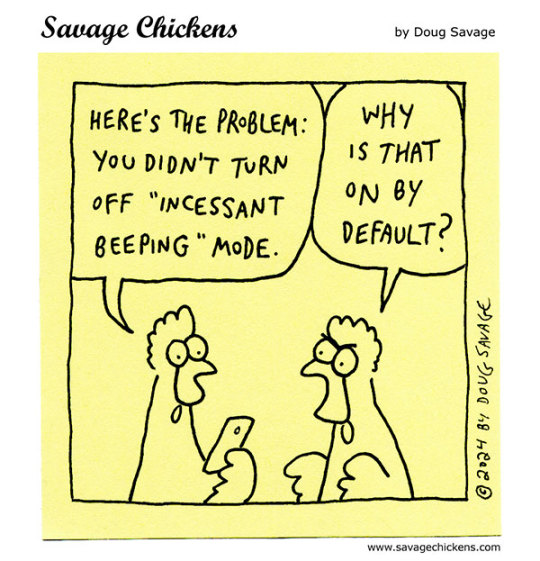
It's A Feature.
And more from the world of design.
37 notes
·
View notes
Text
mutuals if y'all are on that mobile app that's a pokemon card/battling app and you wanna be friends lmk... so far i'm just friends with my best friend and his younger brother who i have never spoken to but find rather awesome, and i have done two battles with a 50% success rate because this is the first time i have pokemon card battled literally ever. i don't know what i'm doing. but if you wanna be my friend lmk
#nightmare.pkmn#i'm SO BAD but its lowkey fun#the app is really overwhelming though#its fun but like. i feel like the web design is the least overwhelming like its quite simple and easy to use i love the interface#i just get very stressed because there's a lot to do
4 notes
·
View notes
Text






Want to add a cool light beam to your designs in Figma? It's easier than you think!
Just design a few shapes, blur them, and blend them together for a glowing effect.
Follow these steps to make your designs really shine!
4 notes
·
View notes
Text
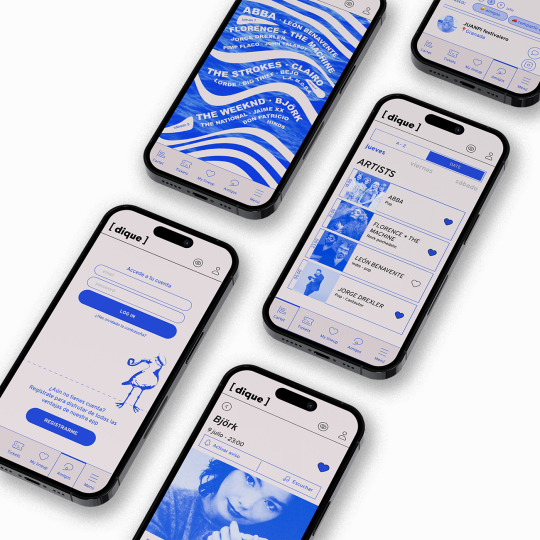
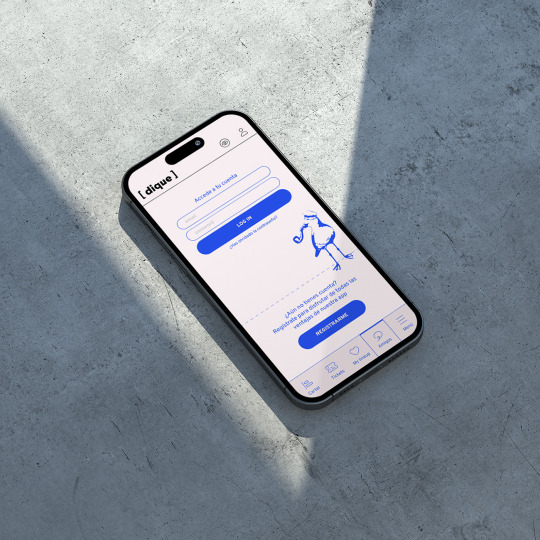
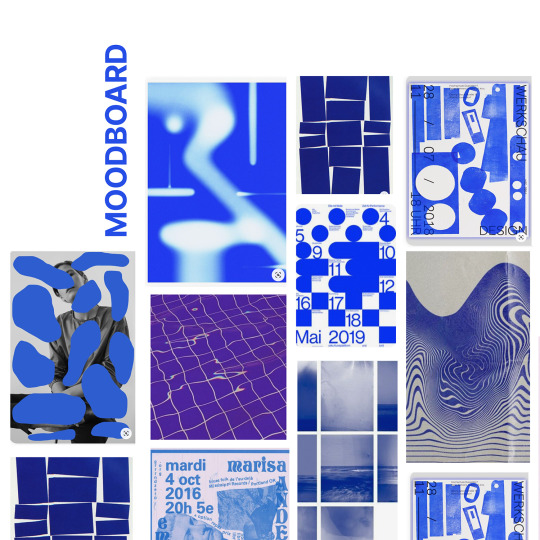
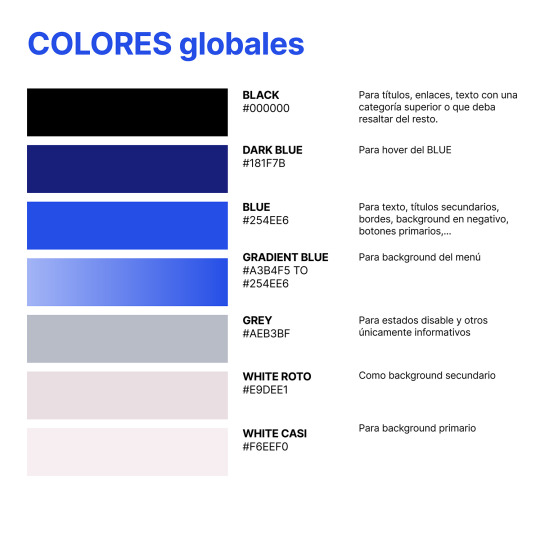
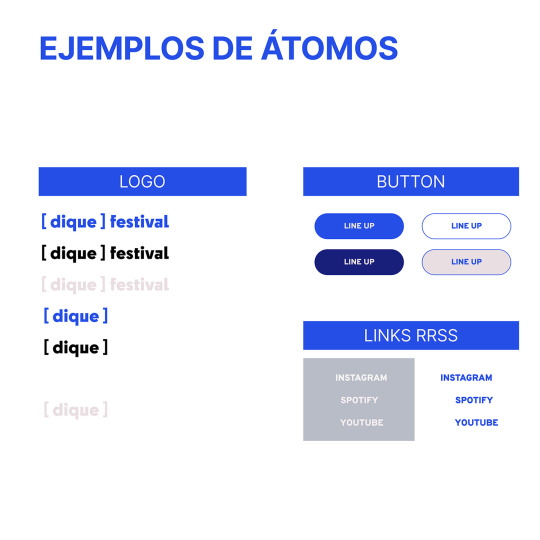
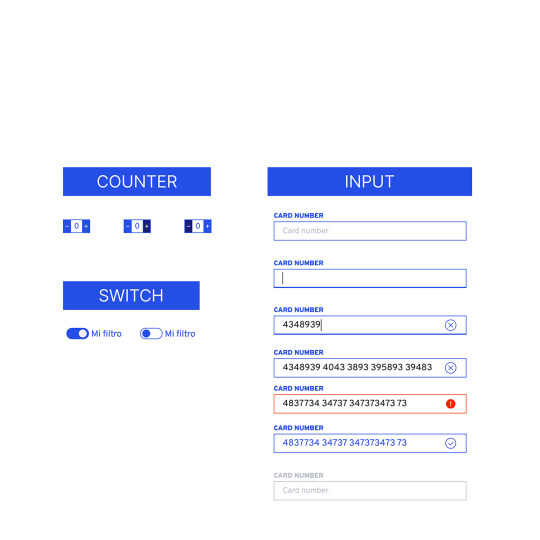
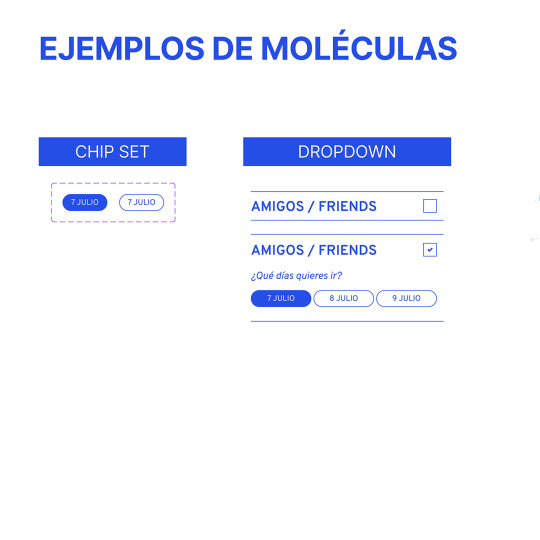
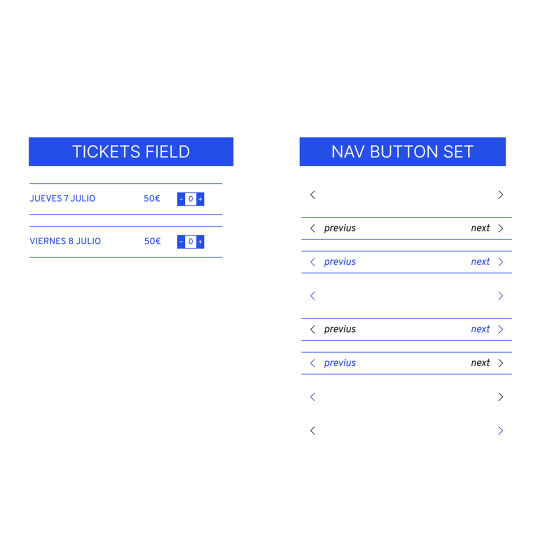
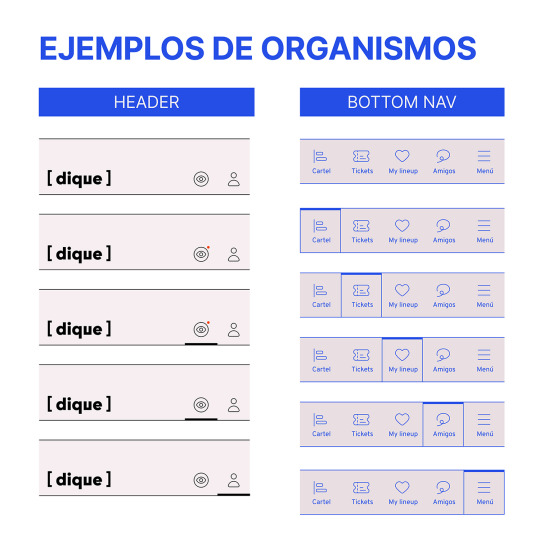
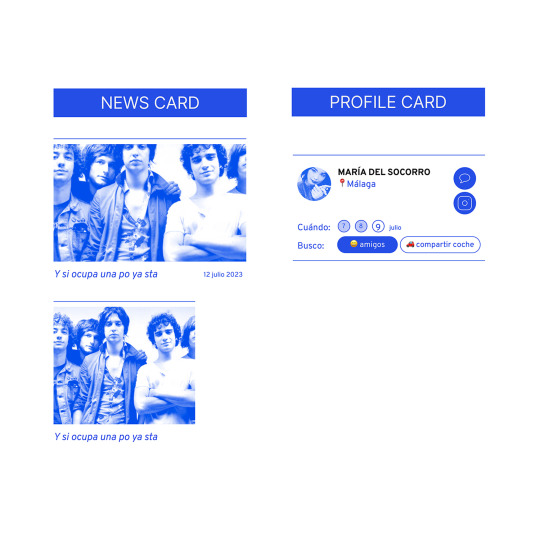
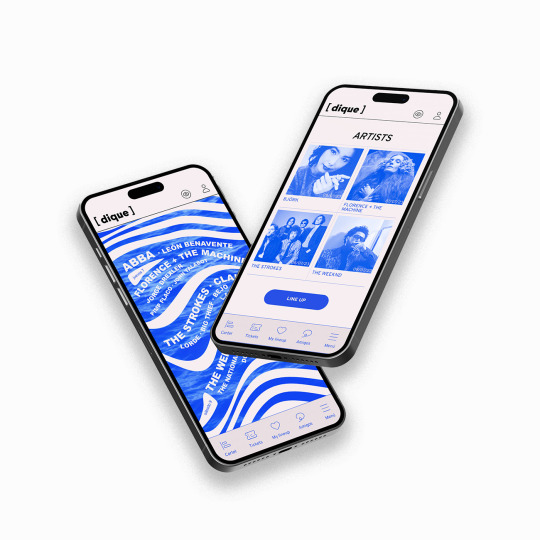
Curso de Especialista en UX-UI 2022-23. Proyecto Final de Ana Ortega Moral: diseño de app para Dique Festival.
#UX-UI#diseño UX-UI#diseño responsive#responsive design#Ana Ortega#diseño UI#UI design#UI#UX#User Interface#User Experience#diseño app#app Dique Festival#La Gauss#lagauss#La x Gauss#Gauss Multimedia#gaussmultimedia
8 notes
·
View notes
Text
I will do mobile app, website, dashboard, software, design, UX UI design with Figma, photoshp or xd
Fiverr Gig link : https://www.fiverr.com/s/Ajjml4
UI Design
UI design involves creating the user interface of a digital product, focusing on its visual elements and layout.
UI/UX Design
UI/UX design combines user interface and user experience design to create a seamless and user-friendly digital product.
Mobile App Design
Mobile app design is the process of creating the visual elements and layout for a mobile application.
App Design
App design refers to the overall design of an application, encompassing both its user interface and user experience.
Figma
Figma is a popular design and prototyping tool used by designers and teams for creating digital designs and collaborating on projects.
Mobile App UI
Mobile app UI design focuses specifically on the user interface elements of a mobile application.
UX Design
UX design, or user experience design, involves creating a positive and efficient experience for users when interacting with a digital product.
Mobile App
A mobile app is a software application designed to run on mobile devices like smartphones and tablets.
App UI Design
App UI design focuses on the visual elements and layout of the user interface within an application.
UI/UX
UI/UX combines user interface and user experience design to ensure a product is both visually appealing and user-friendly.
Website Design
Website design involves creating the visual elements and layout for a website.
UX UI Design
UX UI design combines user experience and user interface design to create an optimal user interaction with a digital product.
Figma Design
Figma design refers to the design work done using the Figma design and prototyping tool.
UX
UX, or user experience, focuses on enhancing user satisfaction by improving the usability and accessibility of a digital product.
UI
UI, or user interface, pertains to the visual elements and layout that users interact with in a digital product.
Prototype
A prototype is a preliminary model of a digital product used for testing and evaluation before full development.
User Interface
The user interface (UI) is the point of interaction between the user and a digital product.
UX UI
UX UI combines user experience and user interface design to create a cohesive and user-friendly product.
Mobile UI Design
Mobile UI design focuses on creating the visual elements and layout specifically for mobile devices.
App UI UX
App UI UX design combines user interface and user experience design for an application.
Web UI Design
Web UI design involves creating the visual elements and layout for web applications and websites.
User Experience
User experience (UX) refers to the overall experience a user has while interacting with a digital product.
Web Design
Web design is the process of creating the visual elements and layout for websites.
Mobile UI
Mobile UI encompasses the visual elements and layout specifically designed for mobile devices.
Website UI Design
Website UI design focuses on creating the user interface for websites.
Mobile Design
Mobile design involves designing for mobile devices, including both UI and UX considerations.
Landing Page Design
Landing page design focuses on creating a compelling and conversion-friendly webpage for marketing purposes.
Wireframe
A wireframe is a visual representation of the layout and structure of a digital product, used as a blueprint for design and development.
Figma App Design
Figma app design refers to using the Figma tool for designing mobile and web applications.
Wireframe Design
Wireframe design involves creating visual blueprints of digital products to plan their layout and structure.
UI UX Designer
A UI/UX designer specializes in both user interface and user experience design.
Website
A website is a collection of webpages accessible on the internet, designed for various purposes.
Web UI UX
Web UI/UX design combines user interface and user experience principles for web-based products.
Adobe XD
Adobe XD is a design and prototyping tool used for creating user interfaces and experiences.
Website UI
Website UI refers to the user interface elements of a website.
Dashboard UI UX
Dashboard UI/UX design involves creating user-friendly and informative dashboards for data visualization.
Application
An application (app) is a software program designed to perform specific tasks or functions on a digital device.
Responsive Design
Responsive design ensures that a digital product adapts and functions well on various screen sizes and devices.
Dashboard Design
Dashboard design focuses on creating visually appealing and functional dashboards for data presentation.
iOS
iOS is the operating system developed by Apple for their mobile devices such as iPhones and iPads.
Mobile
Mobile refers to devices like smartphones and tablets that are portable and typically run on mobile operating systems.
Android
Android is the operating system developed by Google for a wide range of mobile devices.
Web App Design
Web app design involves designing the user interface and user experience for web-based applications.
Website UX
Website UX focuses on optimizing the user experience of a website to meet user needs and expectations.
App
An app, short for application, is a software program designed for specific functions or tasks.
Design
Design encompasses the process of creating visual and functional elements for a product or project.
Web UI
Web UI refers to the user interface elements of a web-based product or application.
App Screenshots
App screenshots are images captured from a mobile app to showcase its features and design.
App Prototype
An app prototype is a preliminary model of a mobile application used for testing and demonstration.
App UI
App UI refers to the user interface elements within a mobile application.
App Development
App development involves the process of creating and building software applications.
Web Application
A web application is a software program accessed and used through a web browser.
NFT Website Design
NFT website design focuses on creating websites for buying, selling, and trading non-fungible tokens (NFTs).
App Mockup
An app mockup is a static representation of an application's user interface, used for design and presentation purposes.
UI Website Design
UI website design involves creating the user interface elements for a website.
UI UX Website
UI/UX website design combines user interface and user experience principles for web-based products.
Landing Page UI
Landing page UI design focuses on creating the user interface elements of a landing page.
Android App UI
Android app UI design involves designing the user interface for applications on the Android platform.
PSD Design
PSD design refers to creating design layouts and elements using Adobe Photoshop (PSD) files.
#Certainly#here are the points with the “hax” tag added:#UI Design#UI/UX Design#Mobile App Design#App Design#Figma#Mobile App UI#UX Design#Mobile App#App UI Design#UI/UX#Website Design#UX UI Design#Figma Design#UX#UI#Prototype#User Interface#UX UI#Mobile UI Design#App UI UX#Web UI Design#User Experience#Web Design#Mobile UI#Website UI Design#Mobile Design#Landing Page Design#Wireframe
10 notes
·
View notes
Text
There was that scene in Kim's Convenience where the daughter is in her photography class and her lecturer is looking up her website, realises the first page isn't hers, the second is also not hers, she has to go to page 2 of google and at that point just throws down her hands and says at that point, as a potential customer, she already loses interest and gives up cause it's not worth the effort
and lately I just feel like the whole fucking internet feels like that
I want to look up how to use cricut stuff and what that even really is, what can I do with what but when I put their name in i get taken to the fucking shop with no explanations far and wide, then next link is also the shop, next link is ALSO the shop but different, and by the time I finally find a page that has any kind of explanation, i'm so annoyed that the hoops is makes me jump through THEN—e.g. selecting which topic I want to learn more about—I'm no longer interested in doing this shit
the other day I wanted to look up what Nokia is up to in terms of phones these days but they no longer have 1 coherent website. In general, many places seem to not want any coherence in their websites, or sub-menus that you can easily navigate
Like, I come from myspace. I know how to navigate the internet. I played WoW in days of dial-up internet. And yet, everything is so goddamn convoluted and incoherent, there is NO structure or logic to anything and on top of that, google, and with it most other search engines, are fucking fried! A few years ago, if a website was really badly designed, you could just navigate back, google the website + search term you needed and get there somehow, but now that is also useless more often than not!
At this point I am genuinely over the internet. We had a good 15 years with it, let's pack it up.
#technology#rant#google#internet#I would PREFER myspace days#on wordpress many things are no longer possible#that I want to do#but they are like 'users can only click and drag and we do not trust them with that power'#between this and AI I am sick of it#genuinely i don't think these people understand how much they are not worth my time#just so I can give them money#paypal too!!!!#someone sent me a msg on there didn't know that was possible but cool#so I checked my messages but haha no that's where paypal msgs go#as in letters from paypal#not messages ON paypal#so I check my payments since it was in response to that but ALSO no#at that point I already wanted to shake whoever made that fucked up choice#cause already I'm tired of it#it should be either in my messages or on my dashboard with the payment it belongs to#y'all don't know what you are doing get outttt#I should do two things:#a) start a 'learn everything' discord server with anyone who wants in#we will teach each other everything we want#fuck khan academy I'm doing this now#b) go on linkedin and promote myself as consultant for 1000 things#app design/user interface consultant#communcation consultant too#writing consultant! Social media consultant!#if it makes me want to yell at you I will yell at you
3 notes
·
View notes
Text
if ribblr has 1 hater i am that hater
#just the WORST FUCKING WEBSITE i have ever used. nothing about it is good. everything is so badly designed#influencer sponsored hell. you don't get to keep anything you own#no SCREENSHOTS no pdfs no copy and paste#accessibility features are beyond a joke. clunky and impossible to navigate interface#limit on free pattern access. requires constant internet connection#paying to only RENT everything#constant popups and flashing constant bugs and glitches NOTHING WORKS#all wrapped up in a childish twee infantilizing package about how pdfs are Too Confusing and we stupid baby crafters need a Revolution to#make things Easier on our stupid dumb little gen z brains#like yeah fuck you too#also it took me a week to get the website to STOP sending me a fucking automated email EVERY DAY#i'm assuming it's also data farming it just seems like it is lmao but even if it isn't just. dogshit website#i haven't even installed the app i have to imagine it's just as bad but with ads#seriously fuck ribblr stop using this piece of shit website#txt
7 notes
·
View notes
Text
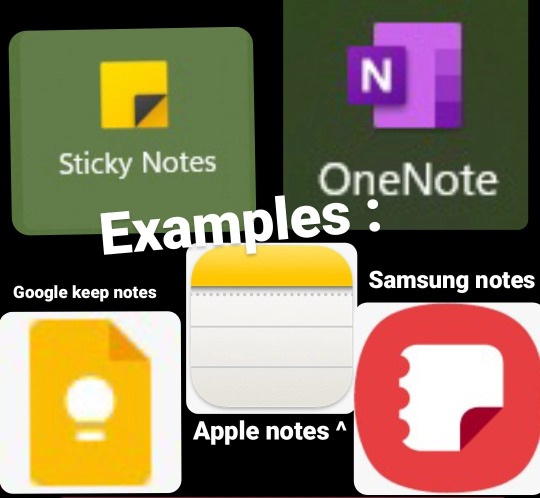
#digital#digital notes#note taking#notes#school#work#digital note taking#digital notebooks#ux#ui#writeblr#designer#writer#writers on tumblr#application#app#application designs#user experience#user interface#user interaction#interaction designer#IxD#apple notes#samsung notes#microsoft onenote#google keep notes#sticky notes#journal#diary#dear diary
2 notes
·
View notes
Text
Check my last project on behance
NUST : NEWS BRAND UI
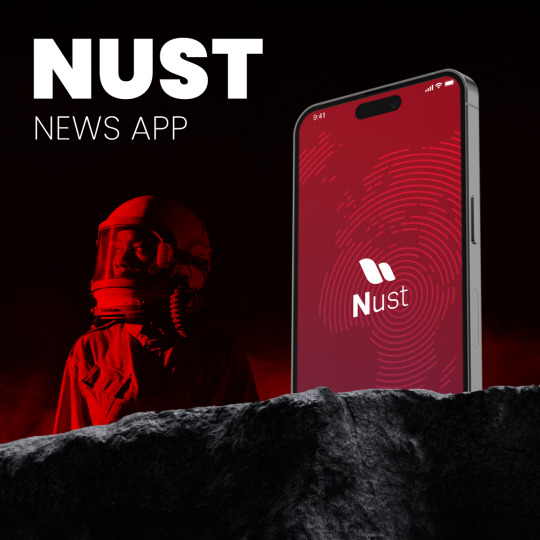



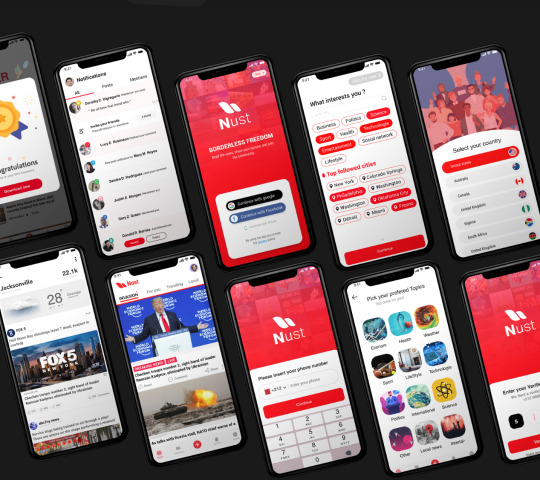
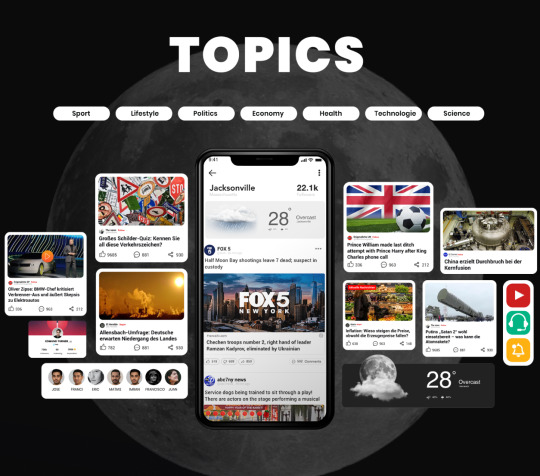
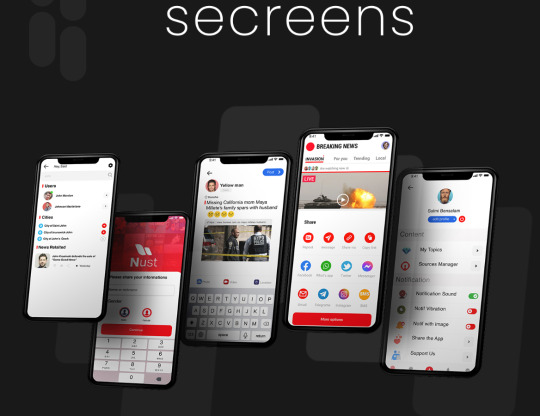

2 notes
·
View notes
Text





Shadows are a powerful tool in UI design! 🌟 They add depth, guide user attention, and make interfaces feel interactive. Whether you're using soft shadows for buttons or strong shadows for modals, it's all about creating a seamless user experience. 🙌 ✨
Pro tip: Ditch black shadows and opt for color-matched ones for a polished, cohesive look! Want to know how dynamic shadows can elevate your design? Check out these essential tips.
5 notes
·
View notes
Text
How Mobile App Design Impacts User Retention: A UI UX Perspective
Mobile UI/UX design plays a crucial role in enhancing user experience and boosting retention rates. A well-crafted interface keeps users engaged and drives app success. With MITSDE’s Advanced Certificate in UI/UX, you’ll master essential design principles, learn user-centric strategies, and build practical skills to create intuitive mobile interfaces. This comprehensive program is perfect for aspiring designers and professionals aiming to upskill in the digital design space. Stay ahead in the competitive tech world by learning from industry experts at MITSDE.
#ui/ux design#user retention#user experience (ux)#user interface (ui)#responsive design#app interface layout#ux analytics tools#mobile user engagement
0 notes
Text
UI Design: The Visual Language Behind Every Great App
Tart Labs, top User Interface Design company in Coimbatore, India, just dropped a blog that anyone into digital design or product development needs to check out. Here's a little glimpse before you hit that full read.
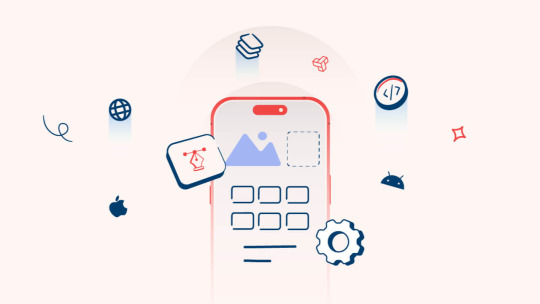
🎨 What is UI Design? UI Design is the practice of building interfaces that are not only functional but also visually engaging. Think menus, buttons, icons, sliders—all the things we click, tap, or swipe.
💬 Why It Matters in Today’s World Let’s be honest—if your app looks like it's from 2005, people bounce. A good UI keeps people:
Engaged
Confident in using the product
Wanting to come back
💡 Key UI Design Principles
Consistency: Make users feel at home.
Feedback: Give signals when actions happen.
Aesthetics: Clean, modern, brand-aligned visuals.
🛠️ Tools That UI Designers Love Figma, Adobe XD, and Sketch are just the start. It’s not about the tool—it’s how you use it to deliver intuitive design.
🚫 Avoid These UI Mistakes
Too many colors
Unreadable fonts
Overloading with animations
Ignoring mobile users
📲 Platforms Matter Designing for mobile? It’s not the same as desktop. Tart Labs gets into platform-specific best practices in the full post.
📖 Full blog here 👉 UI design a complete guide
0 notes
Text

Incipient Infotech is a trusted technology company and software company based in Klemzig, Adelaide, offering innovative custom software development, web development, and mobile app development services designed to propel businesses into the digital future. Our dedication to quality and innovation makes us one of the top Australian companies in the software development industry.
We take pride in following an agile methodology that incorporates agile project management and agile project methodology, focusing on iterative progress, collaboration, and rapid response to change. Our teams are well-versed in the systems development life cycle, ensuring projects follow structured phases for maximum success.
Clients who are searching for how to make a website, a best website builder, or a professional website design company Sydney will find tailored solutions with Incipient Infotech. Our website builder tools and web developers near me services help you establish a compelling online presence with easy-to-use, scalable platforms.
The heart of our work lies in exceptional UI/UX design. We specialize in creating visually appealing and functional interfaces that enhance user experience, combining user interface design principles with strategic UX design approaches to engage your audience effectively.
In addition to traditional development services, we offer expert digital transformation consulting and technology consulting to guide businesses through adopting digital marketing consultant tactics, AI marketing, and artificial intelligence consulting for superior results. Our capabilities in SaaS & AI development allow us to build intelligent software products incorporating ai customer service and ai for data analytics that empower businesses with actionable insights and automation.
Whether you are an emerging startup or an established enterprise looking for expert web developer, developer for software, or simply curious about how can we create a website, Incipient Infotech delivers personalized services with a focus on growth and long-term support.Choose Incipient Infotech for dependable website development, agile software development, and comprehensive tech solutions that keep you ahead in a rapidly evolving digital landscape.
#Web Development#Mobile App Development#UI/UX Design#Custom Software Development#Digital Transformation Consulting#SaaS & AI Development#Website Builder#Agile Methodology#Free Website Builder#Web Design#Technology Company#Best Website Builder#How To Make A Website#Agile Project Management#Software Development Life Cycle#User Interface Design#Agile Approach#How To Create A Website#Web Developer
1 note
·
View note